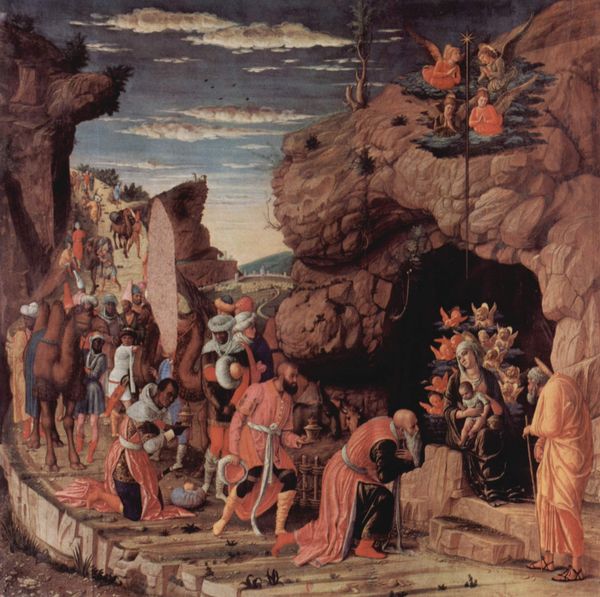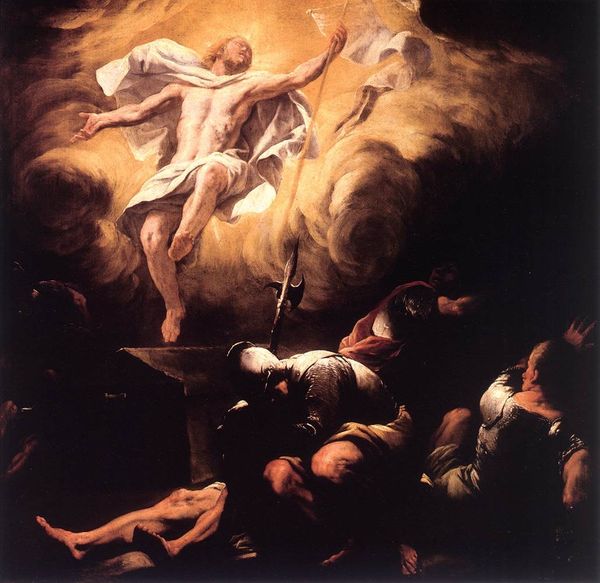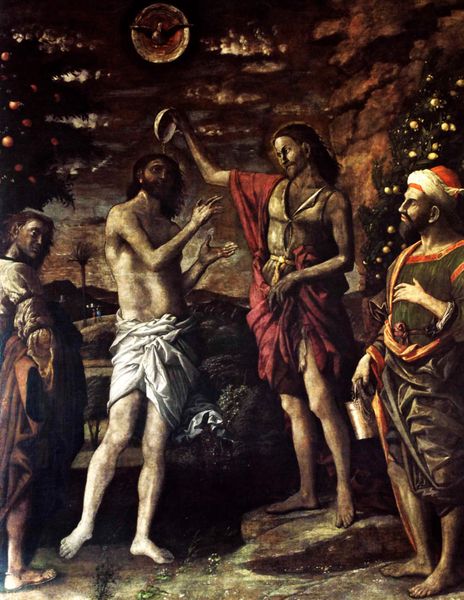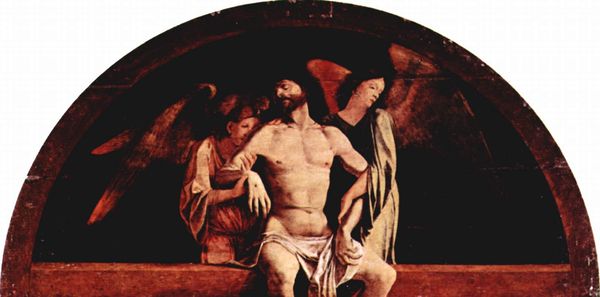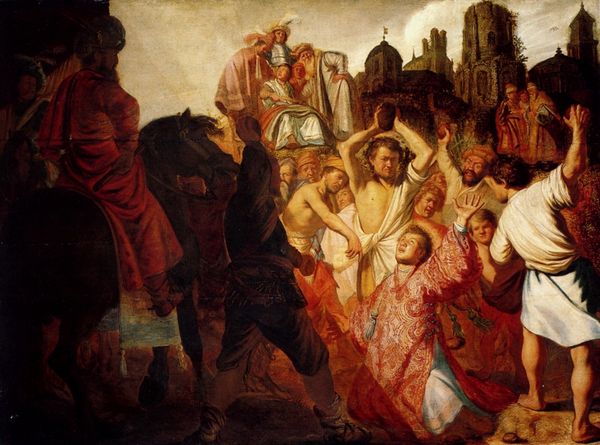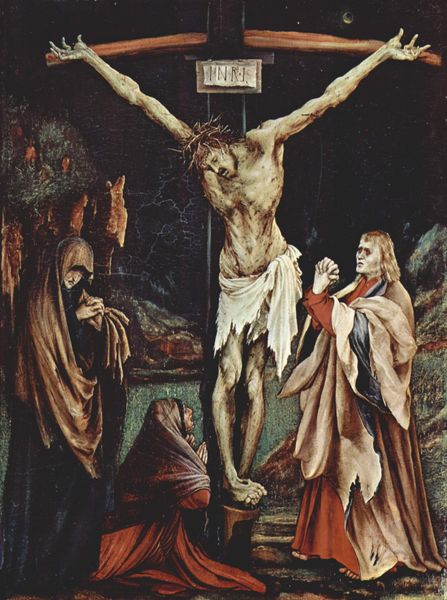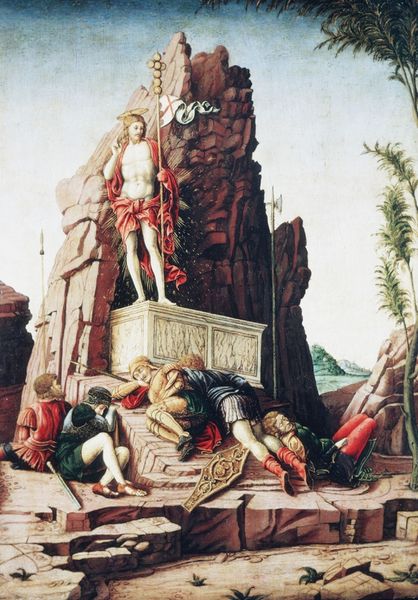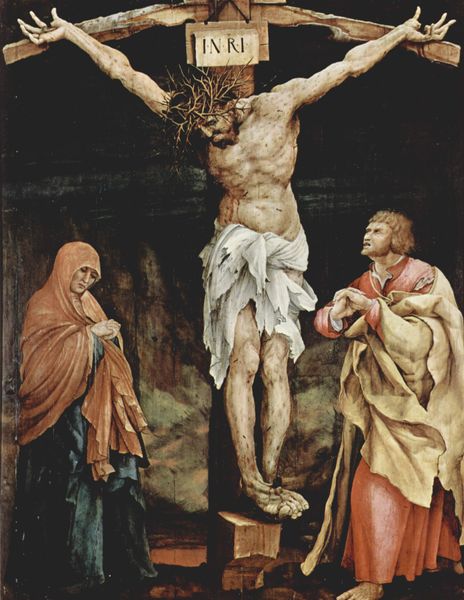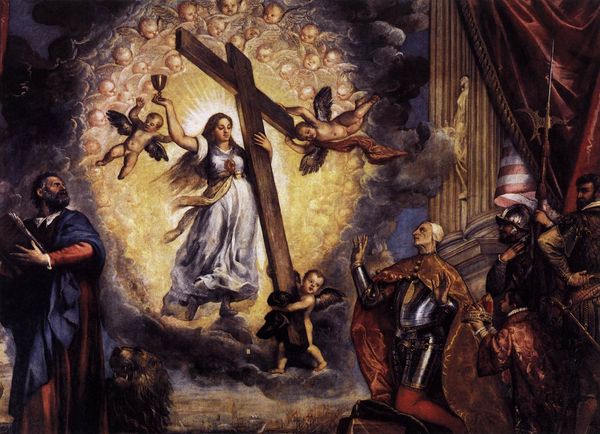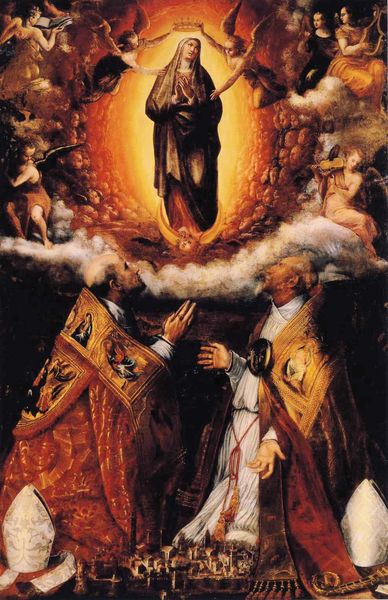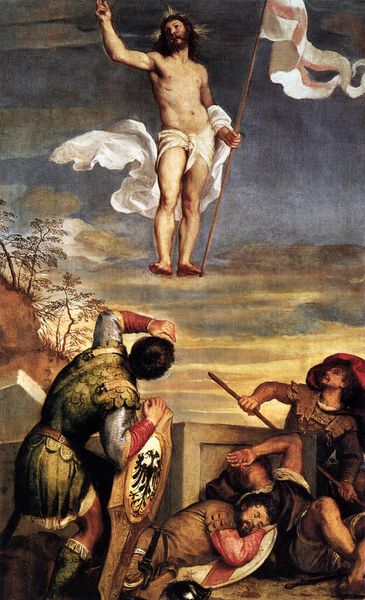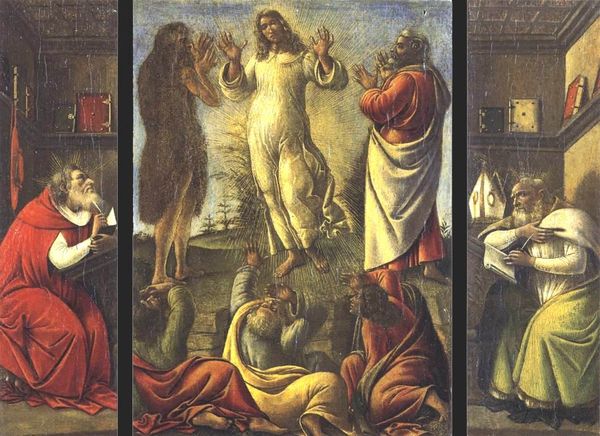
The Resurrection, right hand predella panel from the Altarpiece of St. Zeno of Verona 1459
tempera, painting
tempera
painting
landscape
holy-places
figuration
child
christianity
history-painting
academic-art
italian-renaissance
early-renaissance
realism
christ
Dimensions: 96 x 76 cm
Copyright: Public domain
Editor: So, this is "The Resurrection," a tempera painting from 1459 by Andrea Mantegna. It's a panel from the Altarpiece of St. Zeno. The first thing that strikes me is how theatrical it feels – almost like a stage setting, with the dramatically lit Christ and the sprawling figures of the guards. How do you interpret this work, especially given its historical context? Curator: Absolutely. Mantegna situates us within a pivotal moment in Christian history, but through a lens that’s also deeply engaged with the socio-political landscape of his time. Notice the architectural details – they speak to a burgeoning interest in classical antiquity, which wasn’t just about aesthetic revival. For Mantegna, drawing from Roman grandeur could be read as an implicit commentary on the political authorities of the time. Power, legitimacy, divine right – all these themes intertwine. What do you think the placement of the guards, in particular, suggests? Editor: That’s interesting. The guards seem to be in various states of… well, disarray. Almost like they represent the crumbling authority in the face of something transcendent. Their vulnerability is pretty obvious here. Curator: Precisely. It isn’t just about the divine triumph. Mantegna’s humanism, very radical at the time, allowed him to explore not only the power of Christ, but the power dynamics embedded in systems of belief and governance. What happens when belief clashes with power? This painting poses a serious interrogation of this question and leaves space for contemplation. The light, the composition—everything supports a reading that questions conventional roles of power. Editor: I never thought about it that way. It makes you consider that the painting is not just celebrating religious doctrine, but actually sparking a dialogue about the existing social structures of the era and beyond. Curator: Indeed, the Renaissance was a period of immense upheaval and the rise of humanism offered artists avenues to consider how one can contribute to these conversations in creative ways. Editor: I'm now thinking about what it means to interpret it with present-day social lenses... Curator: Right! Considering that the art sparks intersectional contemporary dialogue may help challenge historical assumptions. Editor: Thanks. This conversation has completely transformed my perspective on it.
Comments
No comments
Be the first to comment and join the conversation on the ultimate creative platform.
